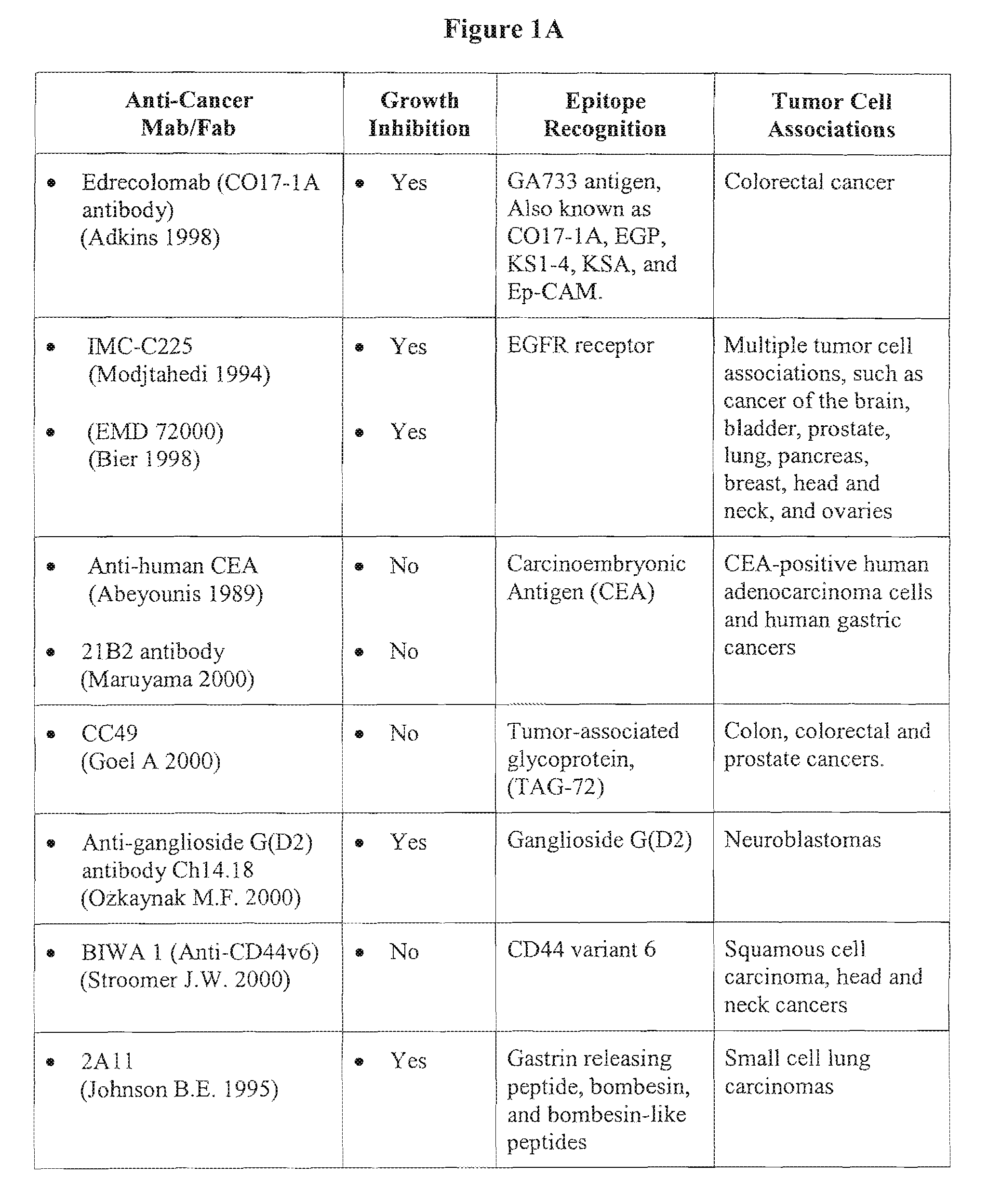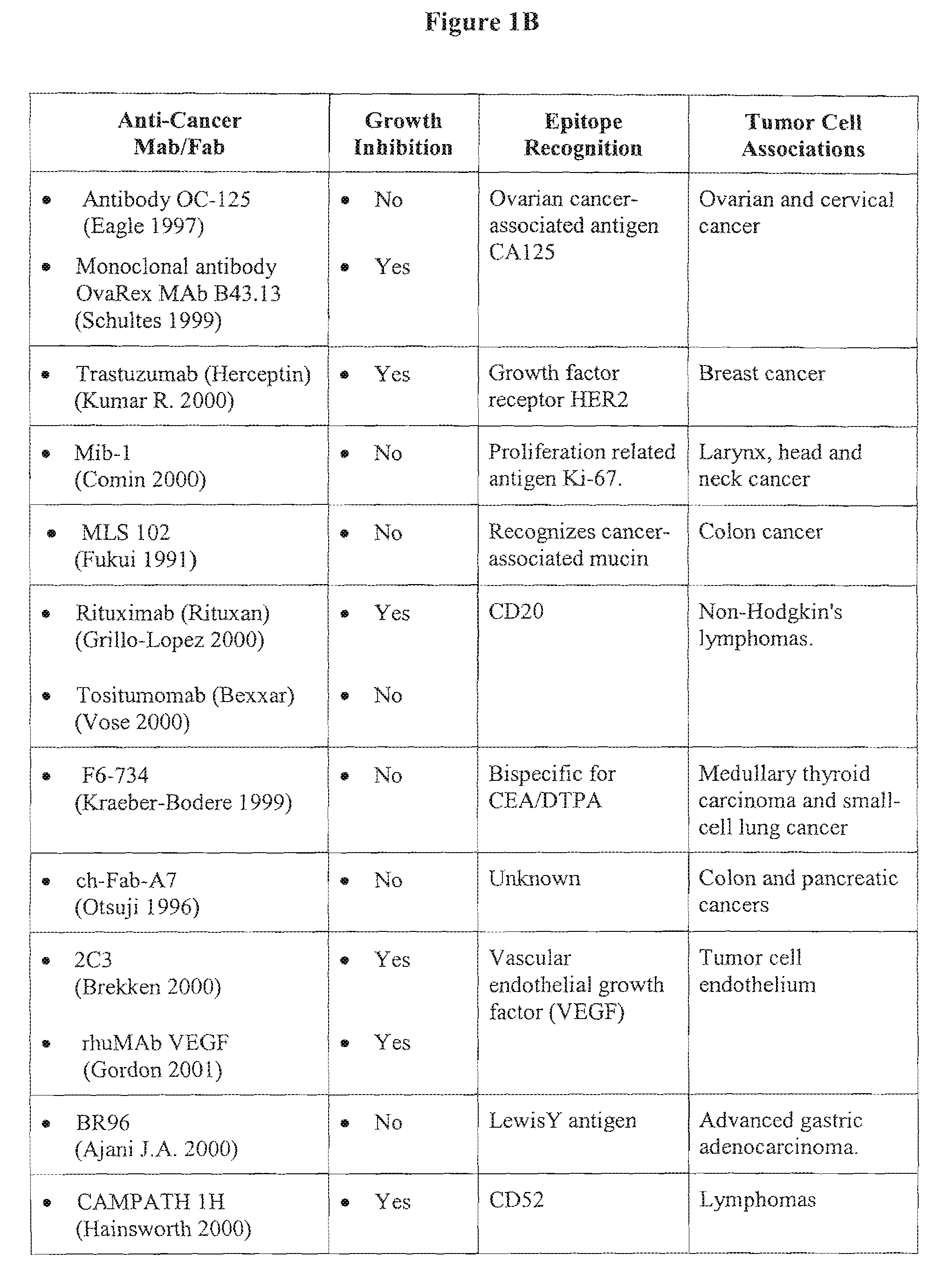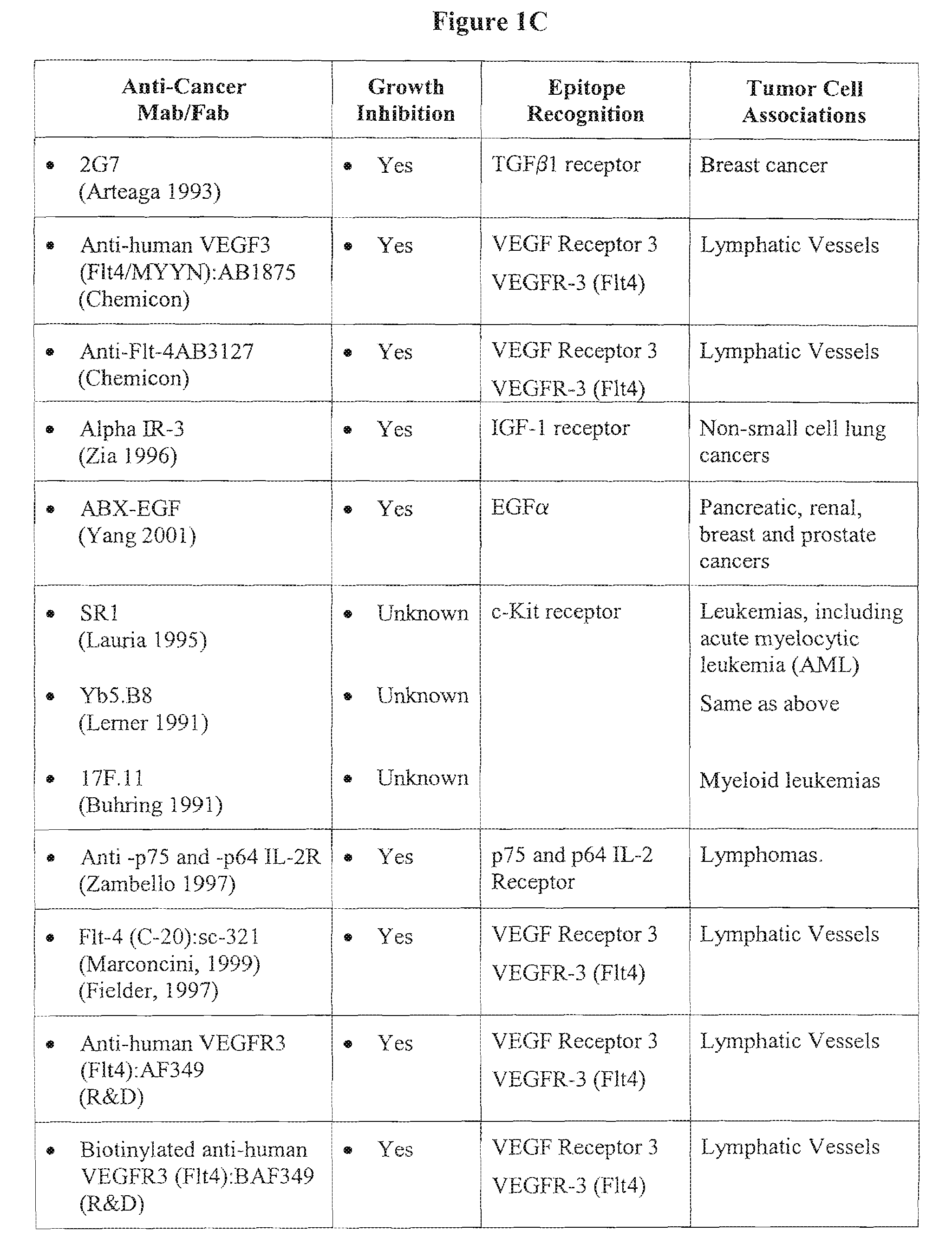Photoimmunotherapies for cancer using combination therapies
a technology of immunoconjugate compositions and combination therapies, which is applied in the direction of antibody medical ingredients, therapy, instruments, etc., can solve the problems of tumor growth, tumoricidal antibodies, and associated toxicity, and achieve the inhibitory effect on tumor cell growth, tumor cell growth inhibition, and tumor cell growth reduction.
- Summary
- Abstract
- Description
- Claims
- Application Information
AI Technical Summary
Benefits of technology
Problems solved by technology
Method used
Image
Examples
example 1
Preparation and Characterization of the PICs.
[0169]Efforts over the past two decades to develop clinically useful PICs for use in photodynamic therapy (PDT) have been unsuccessful. The lack of success is due, in part, to the hydrophobic and aggregative properties of porphyrin-type photosensitizers, which invariably present solubility and purity problems. Another shortcoming has been the lack of a proper target antigen. The target antigen must allow delivery of sufficient amounts of photosensitizer to the lesion such that phototoxicity can be achieved using clinically practical light doses. The results presented herein encompass several measures taken to successfully overcome these problems.
Cell Lines and Antibodies
[0170]A-431 human epidermoid carcinoma cells and J774A. 1 (J774) mouse monocyte-macrophage cells were obtained from American Type Culture Collection (ATCC CRL-1555 and ATCC TIB-67, respectively; Rockville, Md.). 3T3-NR6 (NR6) cells, an EGFR-negative variant cell line deriv...
example 2
In Vitro Analysis of PICs
Cellular Uptake of PICs
[0187]Cellular uptake studies were conducted to evaluate targeting specificity of the PICs. Cells were plated in 2 ml of media in 35 mm tissue culture dishes at densities such that the cells reached ˜90% confluence at the end of a three-day growth period. Following an initial period of at least 14 to 20 hours, which allowed for cells to attach and begin dividing, incubation with PICs or free BPD was initiated by replacing the original 2 ml of media with 2 to 4 ml of media containing PIC or free BPD. From this point onward, cells were handled under low light conditions to avoid photosensitizing the cells or photobleaching the photosensitizer. Incubations were done at 37° C. and were begun with respect to the end of the three-day growth period. At the end of the three-day growth period, the media containing PIC or free BPD was removed, and cells were washed twice with 2 ml of PBS. Cell samples were then collected and analyzed. Cells were...
example 3
In vivo Analysis of Combination EGFR and BPD Verteporfin Therapy
[0195]The monoclonal antibody component of a PIC, such as C225, can possess tumoricidal properties that are independent of the photosensitizer compound to which the antibody is linked. The combined therapeutic use of a tumoricidal antibody and a photosensitizer compound defines what is referred to herein as photodynamic combination therapy or “combination therapy.” Combination therapies, which would include some PICs, advantageously co-localize activated photosensitizer compounds and tumoricidal antibodies in tumor tissue. Employing a dual mechanism of action against tumor growth and / or formation can increase therapeutic efficacy of the treatment regime.
[0196]The effects of combination therapy on tumor inhibition were evaluated in xenograft animal models of intra-peritoneal epithelial ovarian carcinoma. Results obtained in this model system are reasonably predictive of treatment efficacy for the human condition. The fol...
PUM
| Property | Measurement | Unit |
|---|---|---|
| Temperatures | aaaaa | aaaaa |
| Temperatures | aaaaa | aaaaa |
| MW | aaaaa | aaaaa |
Abstract
Description
Claims
Application Information
 Login to View More
Login to View More - R&D
- Intellectual Property
- Life Sciences
- Materials
- Tech Scout
- Unparalleled Data Quality
- Higher Quality Content
- 60% Fewer Hallucinations
Browse by: Latest US Patents, China's latest patents, Technical Efficacy Thesaurus, Application Domain, Technology Topic, Popular Technical Reports.
© 2025 PatSnap. All rights reserved.Legal|Privacy policy|Modern Slavery Act Transparency Statement|Sitemap|About US| Contact US: help@patsnap.com



